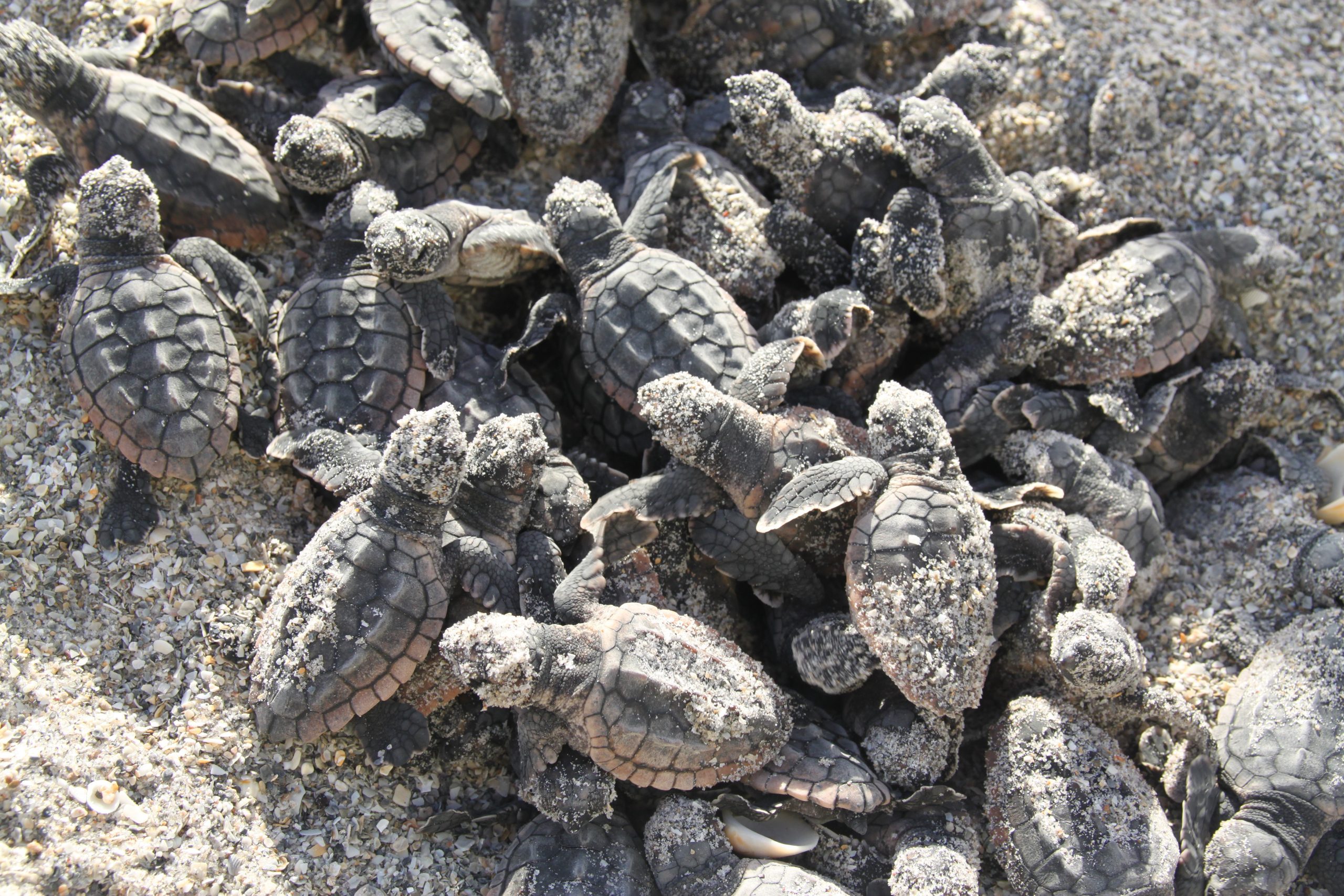Sea turtle nesting season officially ended on October 31, however our biologists are still out on the beach every morning to conduct nesting surveys on Jupiter beach and to monitor the remaining sea turtle nests on Juno, Jupiter and Tequesta beaches.
We have not recorded any new sea turtle crawls since October 18, when a green turtle nest was documented on Tequesta beach. In general, sea turtles have a two week internesting interval (the time between depositing a nest and re-emerging to nest again) Therefore, the nest we documented on October 18 was likely the final nest for the season.
In preparation for two upcoming nourishment projects on Jupiter beach, our research team will be conducting daily surveys on Jupiter beach until November 30. Any late season nests will be relocated to an area outside of the project area. So far, our team has safely relocated 6 sea turtle nests (1 loggerhead and 5 green turtle). The first relocated nest hatched on November 6 and will be excavated on November 9.
As of November 6, there are 23 marked sea turtle nests remaining in our survey area. This season, our research crew recorded over 11,000 nests and marked about 1,300 of those nests for evaluation. A sample of the nests are marked and evaluated, to be representative of the beach as a whole. If we were to mark every single nest, there would be a wooden nest stake about every 4 feet!
LMC biologists will continue to monitor the remaining marked nests until they have hatched, and then excavate the nests to calculate the emergence success (percentage of hatchlings that successfully hatched and got out of the nest). The excavation data are used to evaluate how many hatchlings were produced along our survey area. Last season, we estimated that 1,122,129 hatchlings were produced along Juno, Jupiter and Tequesta beaches!


